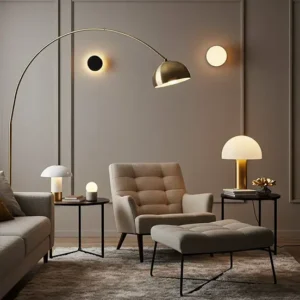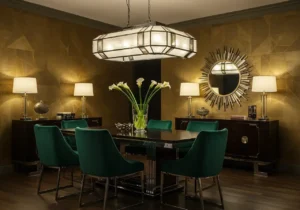Oh, the mid-century dining room! If there’s one style that truly speaks to my heart, it’s the beautiful blend of form and function that defines mid-century design. I just adore how these spaces manage to feel both incredibly chic and wonderfully inviting, like they’re whispering stories of lively dinner parties and warm, lingering conversations. For me, it’s not just about recreating a look; it’s about capturing that timeless essence, that feeling of effortless cool that just makes you want to pull up a chair and stay awhile. So, if you’re ready to infuse your home with some serious retro charm, join me as we explore 15 Mid-Century Dining Room Ideas that will transform your space from drab to fab. Get ready to fall in love with vintage vibes all over again!
Embrace a Colorful Mid-Century Dining Room Vibe
One of the things I love most about mid-century design is its willingness to embrace bold, yet sophisticated, color palettes. It’s not about being loud; it’s about thoughtful pops of color that bring life and personality to your dining room. I remember when I first introduced a deep teal accent wall in my own dining space, and the immediate warmth it brought was just magical. It truly transformed the room into a vibrant, inviting hub.
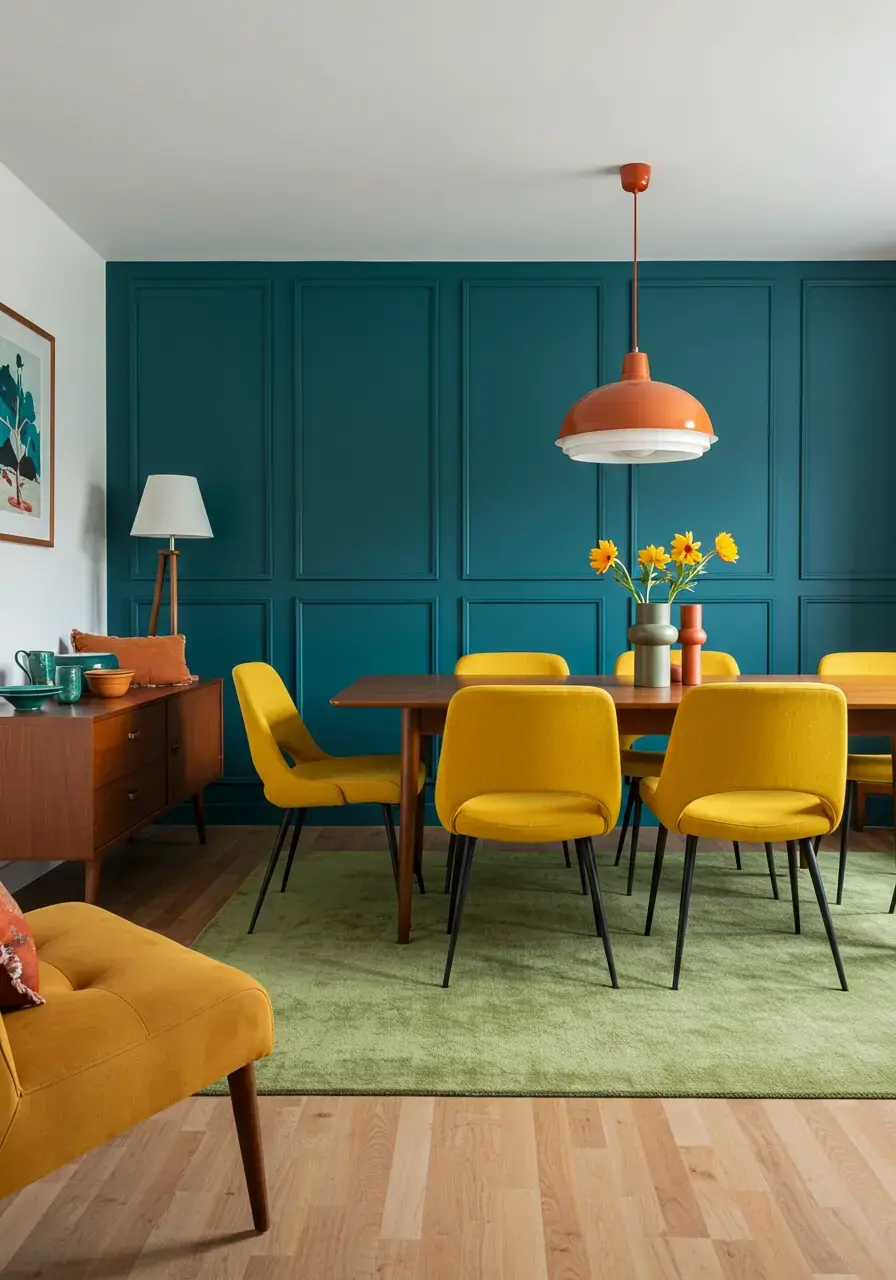
Why This Works:
Using a well-chosen mid-century color palette adds authenticity and vibrance, making the space feel energetic yet cohesive. It evokes that classic retro charm instantly.
How You Can Recreate It:
- Choose accent colors like mustard yellow, avocado green, teal, or burnt orange for textiles, artwork, or one statement wall.
- Incorporate these colors through dining chair upholstery, decorative pillows on a bench, or a colorful area rug.
- Pair these bold accents with neutral backgrounds like warm wood tones or muted grays to keep the look balanced and refined.
Choose Iconic Mid-Century Dining Room Furniture
For me, the furniture is the absolute heart of a mid-century dining room. Think about those timeless pieces by designers like Eames, Saarinen, or Knoll; their designs are just instantly recognizable and so effortlessly elegant. Investing in these iconic shapes, even reproductions, completely sets the tone. When I finally found a vintage Danish teak dining table, it felt like my dining room truly found its soulmate.
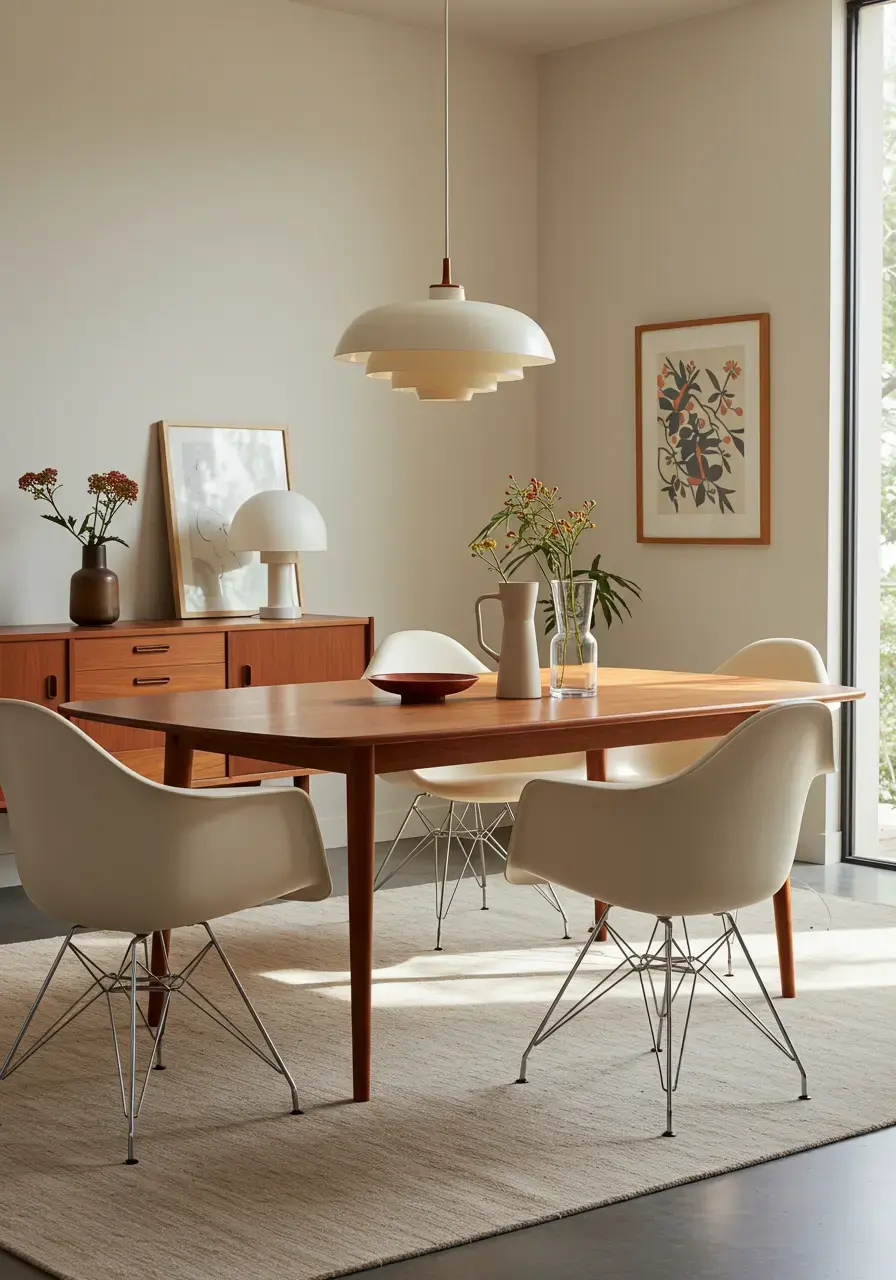
Why This Works:
Iconic furniture pieces are the cornerstone of the mid-century aesthetic. They instantly establish the style, offering clean lines, sophisticated materials, and a sense of timeless design that elevates the entire dining experience.
How You Can Recreate It:
- Look for a sleek, minimalist dining table, perhaps with a tapered leg design or a pedestal base, in teak, walnut, or laminate.
- Pair the table with classic dining chairs such as Eames molded plastic or fiberglass chairs, tulip chairs, or Danish modern ladder-back chairs.
- Consider a credenza or sideboard with clean lines and simple hardware to provide storage and display space.
Lighting Essentials for Your Mid-Century Dining Space
Lighting isn’t just functional; it’s an art form in mid-century design. It’s truly amazing how the right light fixture can completely transform the mood and focal point of a room. I always tell people to think of it as jewelry for your space. When I hung our boomerang-shaped chandelier, it wasn’t just illumination; it became a sculptural statement that always sparks conversation.
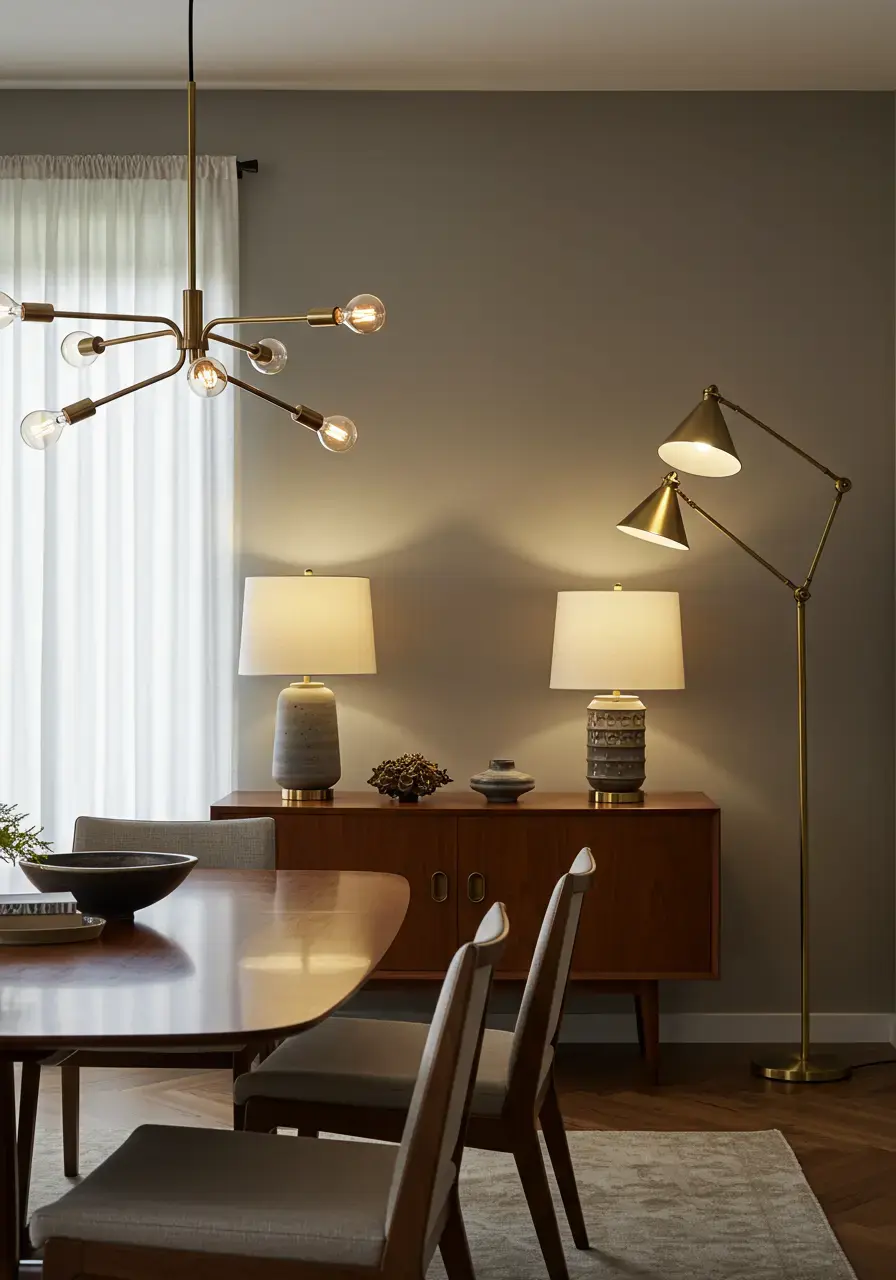
Why This Works:
Distinctive lighting fixtures are key to defining the mid-century aesthetic. They act as sculptural elements, drawing the eye and providing both ambient and task lighting that complements the clean lines and forms of the furniture.
How You Can Recreate It:
- Hang a statement chandelier over your dining table, such as a Sputnik, atomic, or multi-arm fixture with exposed bulbs.
- Incorporate floor lamps with slender, architectural bases and drum or cone-shaped shades for ambient lighting in corners.
- Add a table lamp on a nearby credenza with a distinctive ceramic base and a textured shade for a softer glow.
Incorporate Natural Materials in Mid-Century Dining
One of the hallmarks of mid-century design is its deep appreciation for natural materials. There’s a warmth and an organic softness that wood, leather, and natural fibers bring to a space that just feels so grounding. I always try to bring in elements that connect to nature, whether it’s the rich grain of a walnut table or the texture of a woven placemat. It’s about bringing the outside in, in the most stylish way.
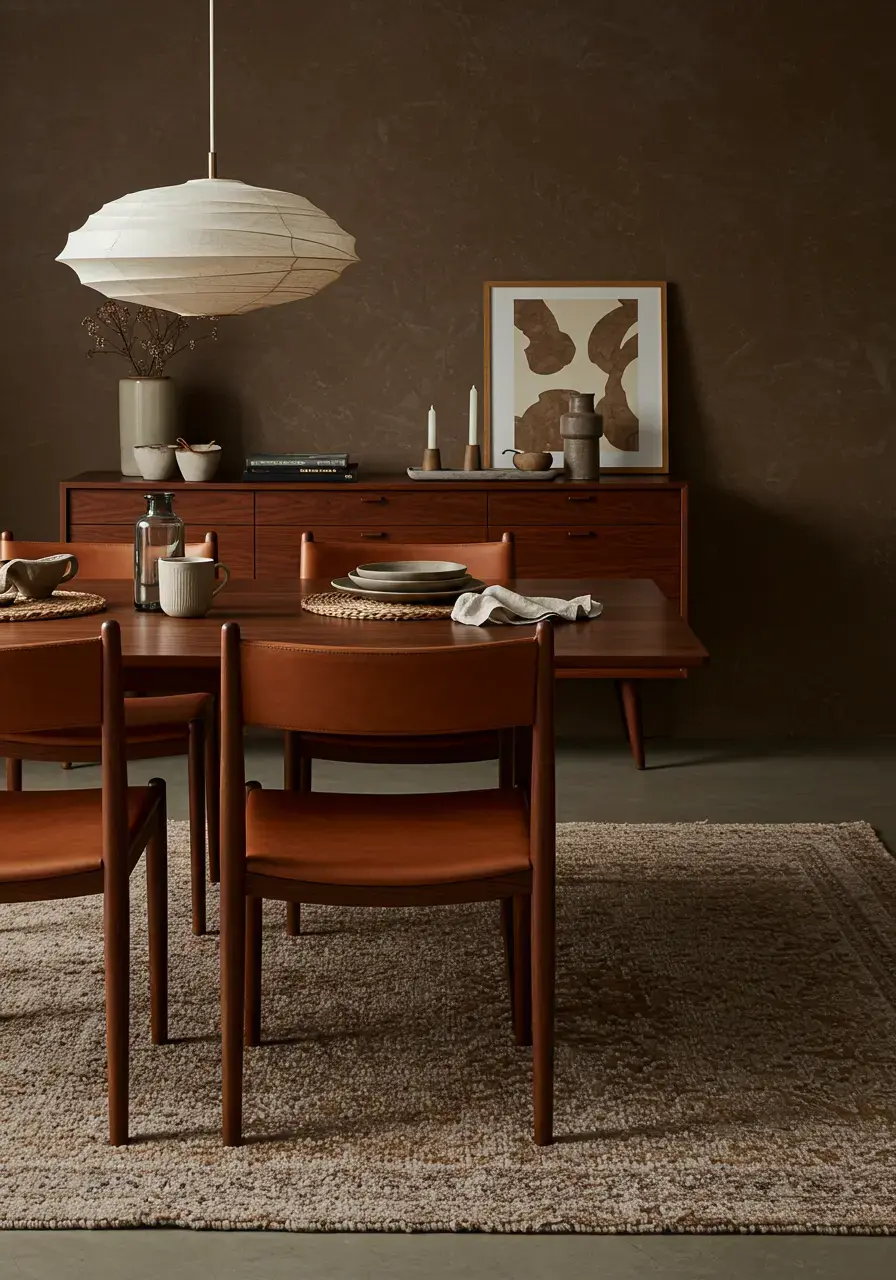
Why This Works:
The use of natural materials like teak, walnut, leather, and wool grounds the mid-century aesthetic, adding warmth, texture, and an organic quality that balances the clean lines and manufactured elements. This creates a cohesive and inviting environment.
How You Can Recreate It:
- Choose furniture made from rich, warm woods like teak, walnut, or mahogany for your table, chairs, or sideboard.
- Incorporate leather upholstery on dining chairs or a banquette for a touch of luxury and durability.
- Use natural textiles for placemats, napkins, or an area rug, such as wool, linen, or cotton, to add texture and softness.
Accessory Selection for a Mid-Century Dining Room
Accessories are those finishing touches that really bring a mid-century dining room to life. They’re where you can truly express your personality and add those playful or sophisticated accents. I love hunting for unique vintage pieces; sometimes, the simplest things, like a ceramic bowl or a sculptural vase, can make the biggest impact. It’s about curation, not clutter.
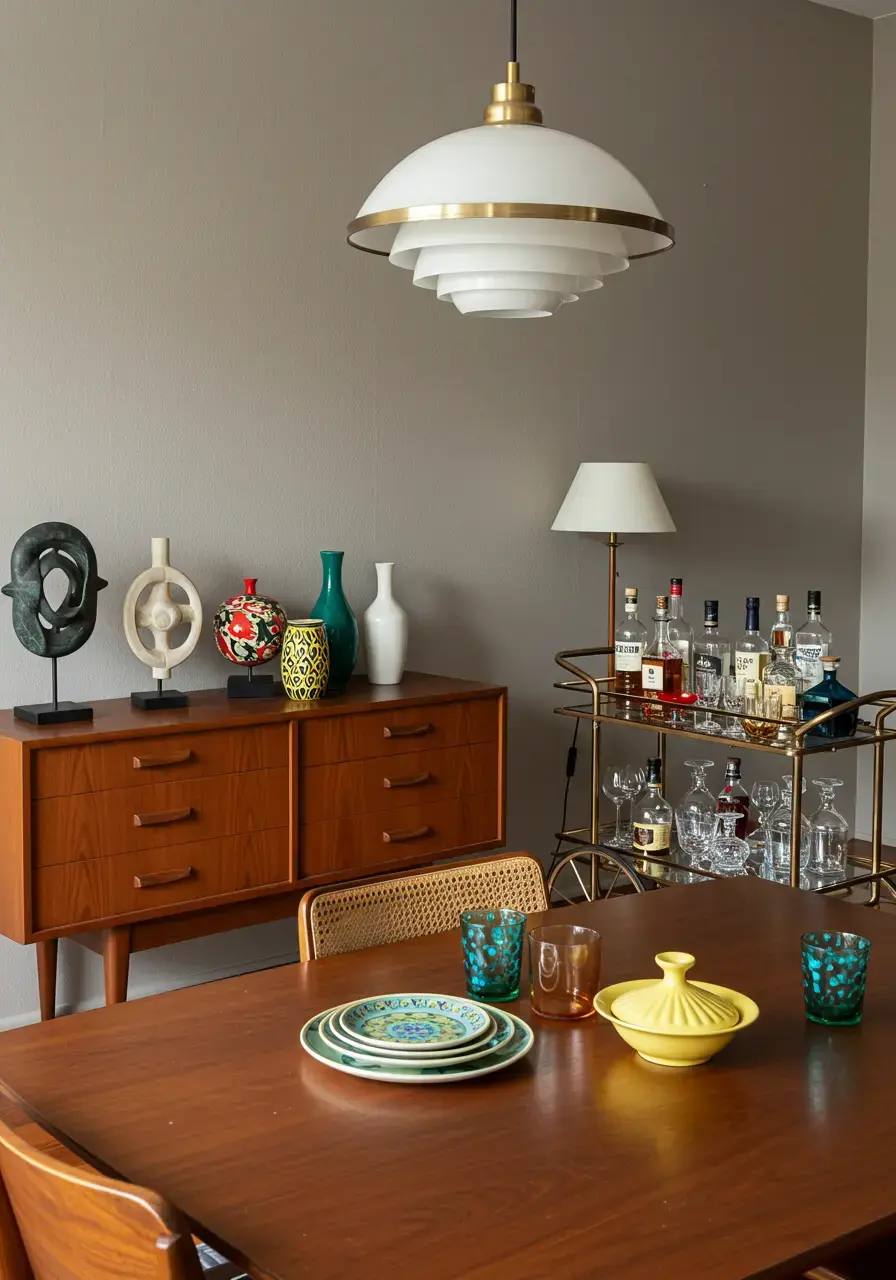
Why This Works:
Thoughtfully chosen accessories reinforce the mid-century aesthetic, adding pops of color, texture, and visual interest without overwhelming the clean lines. They provide personality and a curated feel, completing the room’s narrative.
How You Can Recreate It:
- Display abstract sculptures or geometric vases on your credenza or dining table.
- Use brightly colored or patterned serving dishes and glassware inspired by the era.
- Incorporate a vintage bar cart styled with classic glassware and decanters for a touch of glamour.
Create a Cozy Mid-Century Dining Nook
Even in an open-plan home, you can create a defined, cozy spot for dining that feels intimate and inviting. I did this in my first apartment, carving out a small, sunlit corner for a compact dining area, and it became my favorite place for morning coffee and casual meals. It’s about making the most of your space to create a special moment.
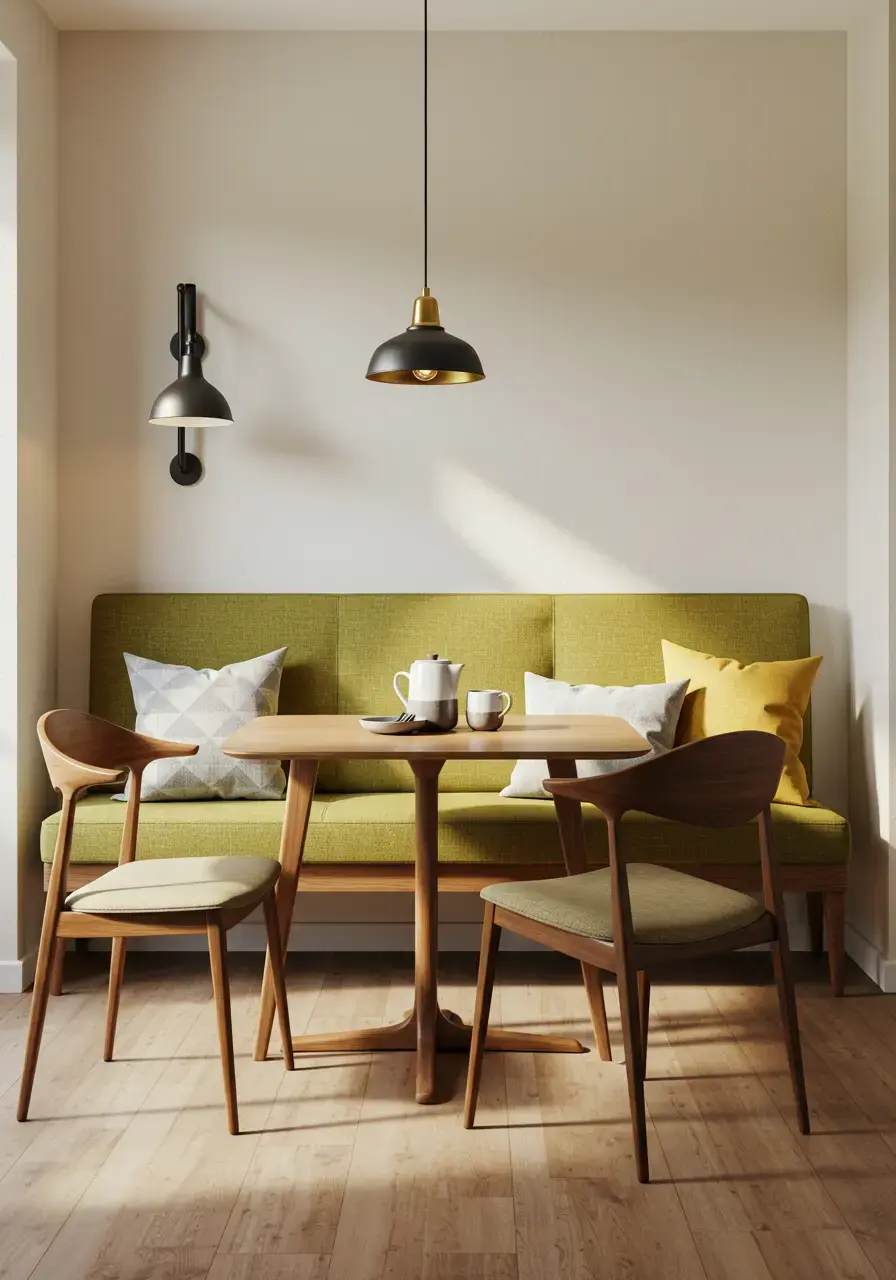
Why This Works:
A cozy dining nook maximizes smaller spaces, creating an intimate and inviting atmosphere for casual meals or focused work. It offers a defined space within a larger room, enhancing functionality and comfort.
How You Can Recreate It:
- Incorporate a built-in banquette or a small, upholstered bench pushed against a wall for a space-saving seating option.
- Choose a round or square dining table that fits snugly into a corner or against a wall.
- Use soft lighting, such as a pendant lamp, and comfortable cushions to enhance the cozy feel.
Wall Decor Ideas for Mid-Century Dining
The walls in a mid-century dining room are like a blank canvas waiting for creative expression. I find that the right wall decor can truly amplify the aesthetic without making the space feel cluttered. I often gravitate towards abstract art or sunburst mirrors because they add such distinctive flair without overwhelming the clean lines of the furniture. It’s about adding artistic touches that resonate with the era.
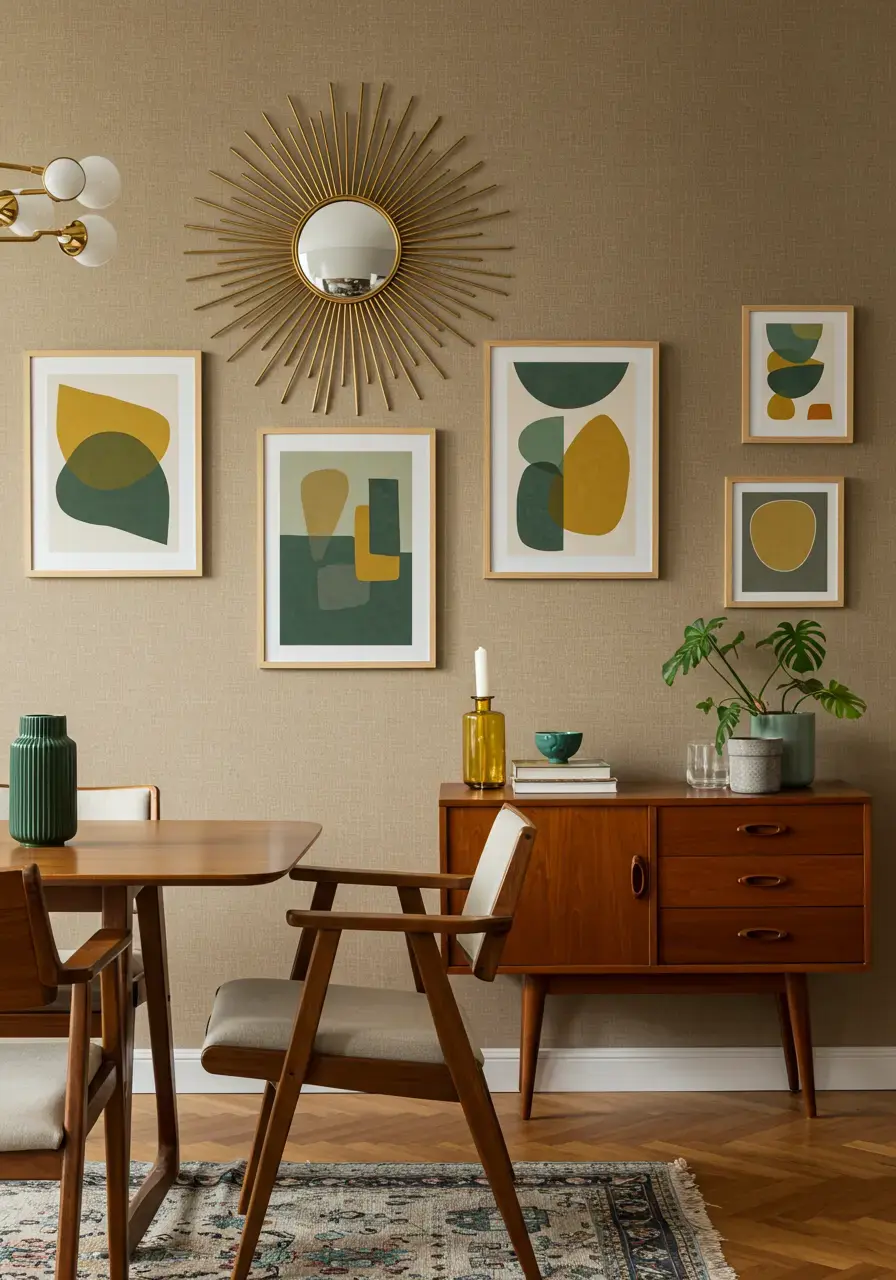
Why This Works:
Wall decor enhances the visual appeal of a mid-century dining room, adding personality, color, and texture. It helps tie the room together and can serve as a focal point, reinforcing the design era’s characteristics.
How You Can Recreate It:
- Hang abstract geometric art prints or paintings with a limited color palette of mid-century hues.
- Install a large sunburst mirror or a collection of smaller mirrors with interesting frames to reflect light and add visual interest.
- Consider a subtly textured or patterned wallpaper on one accent wall to add depth and warmth without being too busy.
Open Concept Mid-Century Dining Room Flow
In many modern homes, the dining area flows seamlessly into other spaces, especially in open-concept layouts. I love this modern approach because it makes entertaining a breeze and allows for a more connected living experience. The key is to create a cohesive flow while still defining the dining zone. My tip is to use subtle cues—like a distinct rug or a striking light fixture—to delineate the space without building walls.

Why This Works:
Creating a good flow in an open-concept mid-century dining room ensures a cohesive and spacious feel. It optimizes traffic patterns, making the space functional for both dining and entertaining, while still maintaining distinct zones.
How You Can Recreate It:
- Use a distinctive area rug to define the dining zone within a larger open space, clearly separating it from the living or kitchen areas.
- Align your dining table with an architectural feature, such as a window or a built-in credenza, to clearly designate the dining area.
- Ensure consistent flooring or a smooth transition between different areas to maintain visual continuity and a sense of openness.
Vintage Finds for Authentic Mid-Century Charm
There’s nothing quite like the thrill of discovering authentic vintage pieces to add true character to a mid-century dining room. Each piece tells a story, and mixing them with new reproductions creates a unique, layered look. I’ve spent countless hours in antique shops and flea markets, and every time I bring home a genuine mid-century piece, it feels like I’m connecting directly to the past. It’s an adventure!
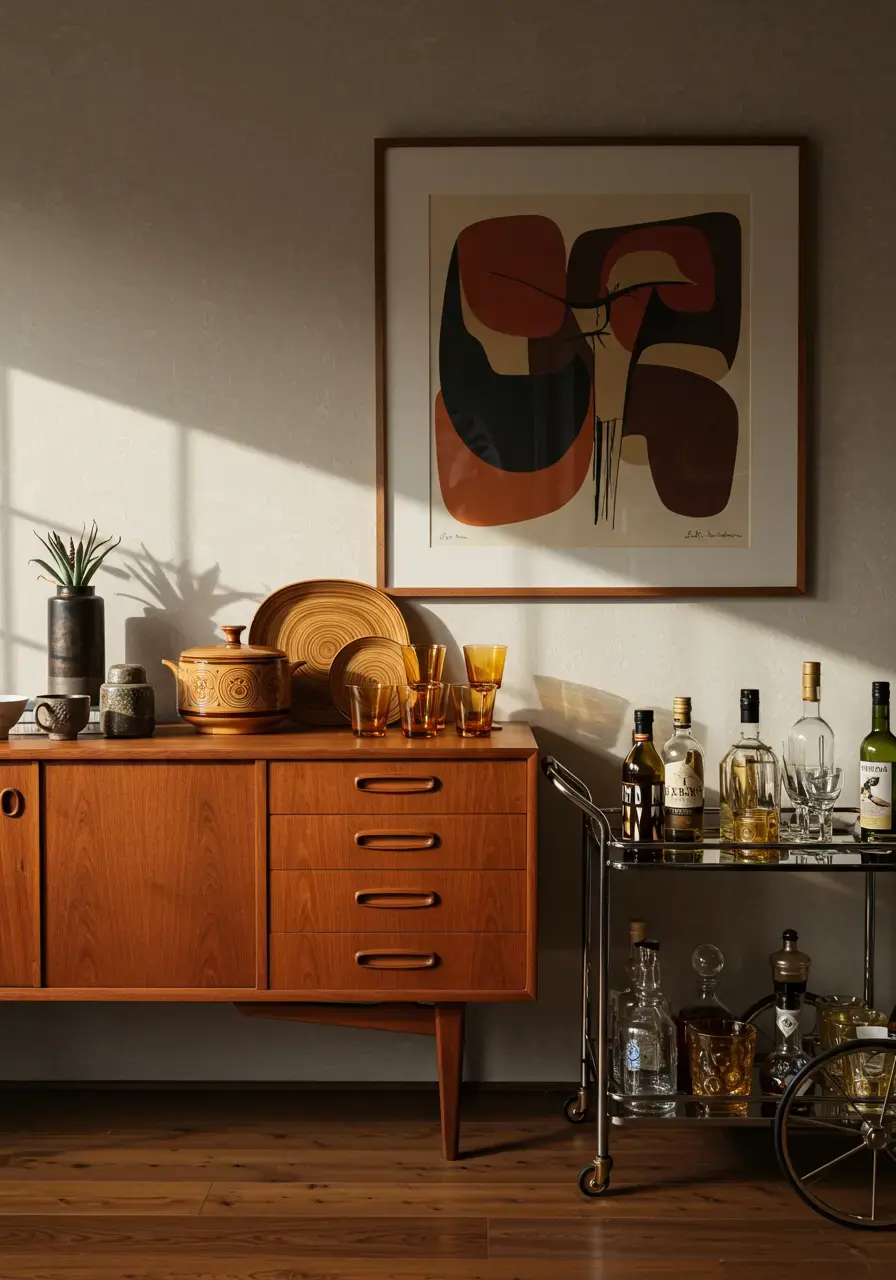
Why This Works:
Incorporating authentic vintage finds adds unparalleled character, history, and a unique, lived-in feel to your mid-century dining room. These pieces provide genuine charm and a deeper connection to the era, making your space truly one-of-a-kind.
How You Can Recreate It:
- Hunt for original mid-century sideboards, credenzas, or display cabinets at antique stores, estate sales, or online marketplaces.
- Source authentic mid-century serving dishes, glassware, or barware to style your dining table or bar cart.
- Look for vintage art prints, abstract sculptures, or ceramic pieces to accessorize your walls and surfaces.
Plant Styling for Your Mid-Century Dining Area
Bringing plants into a mid-century dining room is a wonderful way to soften the clean lines and introduce natural vibrancy. Mid-century design already has that organic connection, so adding leafy greens just feels right. I always recommend larger, architectural plants like a fiddle-leaf fig or a snake plant; they just echo the sculptural forms of the furniture so beautifully. Plus, they add a touch of life!
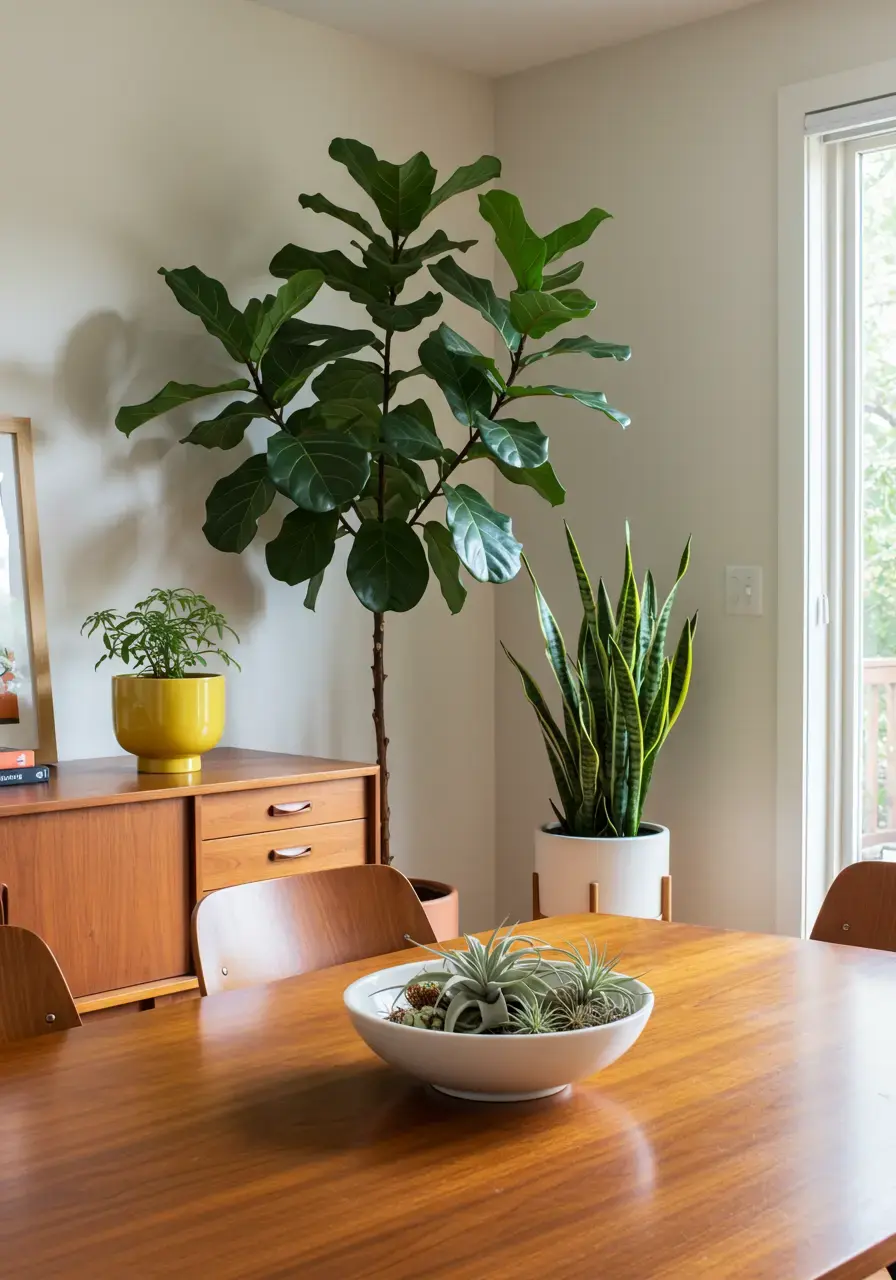
Why This Works:
Plants add an organic touch, softening the clean lines of mid-century furniture and bringing a sense of life and freshness to the dining area. They enhance the biophilic connection often present in the style, improving air quality and visual appeal.
How You Can Recreate It:
- Place a large, architectural plant like a Fiddle Leaf Fig, Monstera, or Snake Plant in a corner or alongside a credenza.
- Use sleek, ceramic planters in colors like terracotta, mustard, or white that complement the mid-century palette.
- Arrange smaller succulents or air plants in sculptural bowls on the dining table or shelves for subtle greenery.
Mid-Century Dining Room Storage Solutions
Effective storage is a must, especially in a dining room where you might have everything from tableware to linens. Mid-century designers were masters of functional beauty, creating pieces that looked incredible while being incredibly practical. I rely on my vintage credenza constantly; it hides away all my dinner party essentials while serving as a beautiful display surface. It’s all about smart solutions that enhance the room.
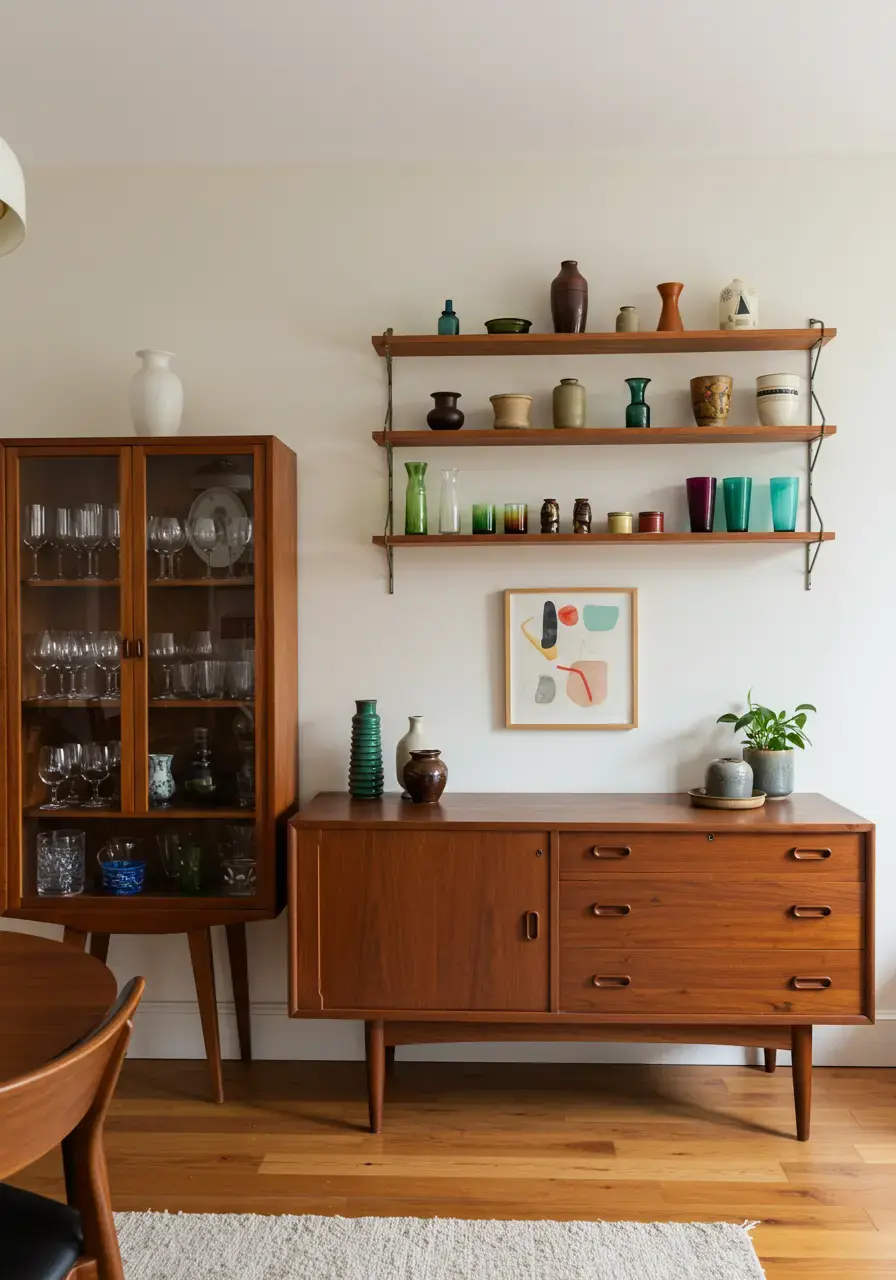
Why This Works:
Well-designed storage solutions maintain the clean, uncluttered aesthetic of a mid-century dining room while providing practical space for dinnerware, linens, and serving pieces. They contribute to the room’s functionality and visual harmony.
How You Can Recreate It:
- Incorporate a sleek sideboard or credenza with multiple drawers and cabinets for hidden storage.
- Utilize a tall cabinet with glass doors to display your favorite mid-century glassware or decorative items.
- Consider floating shelves for displaying smaller collections of ceramics or art, keeping surface areas clear.
Carpet and Rug Choices for Mid-Century Spaces
A well-chosen rug can completely anchor a mid-century dining room, adding warmth, texture, and a defined boundary for the space. I’ve found that a rug can literally tie all the different elements of a room together, creating a cohesive visual statement. For my dining room, a geometric wool rug made the entire area feel more complete and inviting. It’s like adding a cozy hug to your floor!
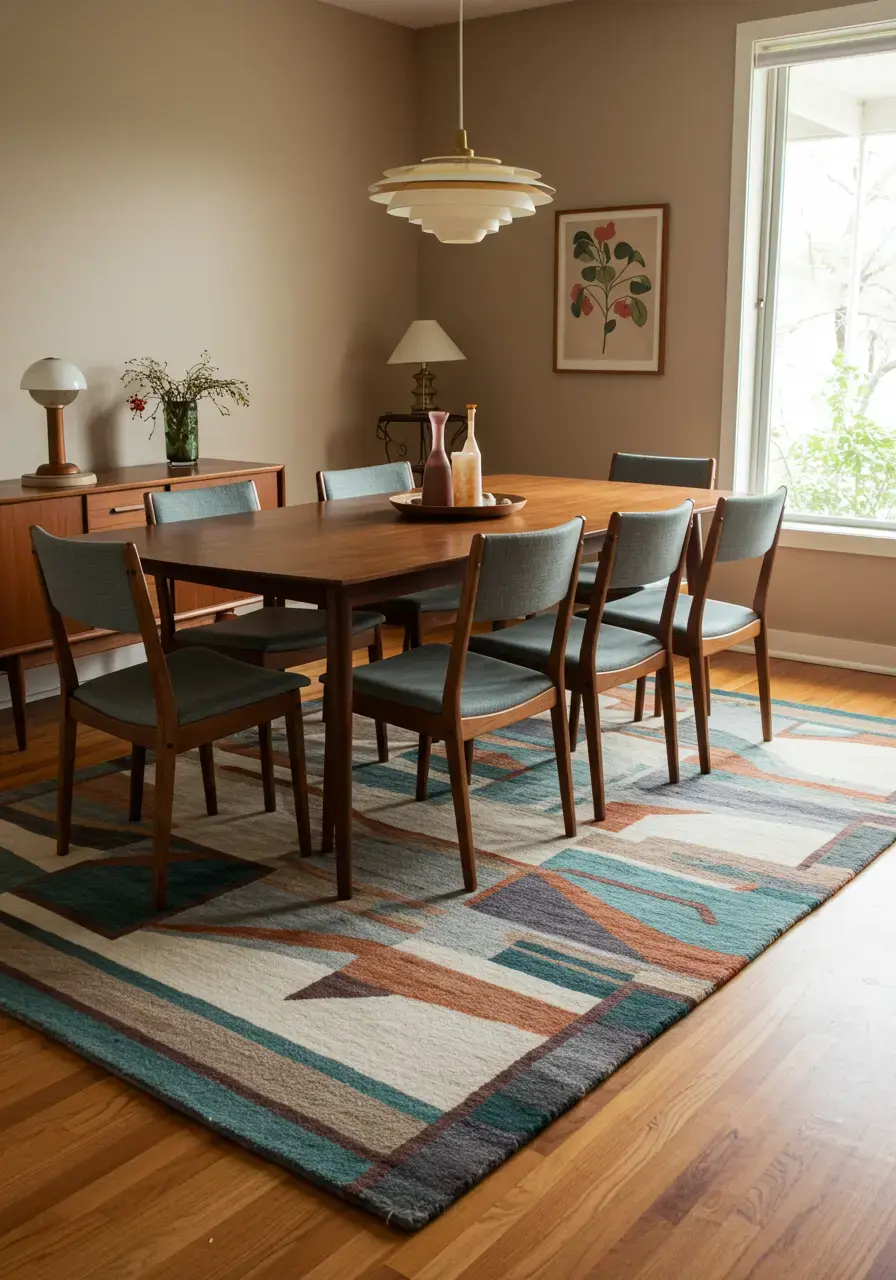
Why This Works:
The right carpet or rug anchors the dining area, adding warmth, texture, and a pop of color or pattern. It protects flooring, absorbs sound, and helps define the space within an open-concept layout, enhancing the overall mid-century feel.
How You Can Recreate It:
- Choose a rug with a geometric pattern, abstract shapes, or a subtle strié design in a mid-century color palette.
- Opt for natural materials like wool or jute for durability and a warm, inviting feel.
- Ensure the rug is large enough for all dining chairs to remain on it even when pulled out, typically extending at least 24 inches beyond the table’s edge.
Artful Arrangements in Your Mid-Century Dining Room
Creating artful arrangements is really about thoughtful curation, whether it’s on your dining table, a credenza, or shelves. It’s where you can gather beautiful objects and tell a visual story. I love playing with different heights and textures, grouping things in threes or fives for visual balance. It’s not just filling a space; it’s about making every display feel purposeful and beautiful.
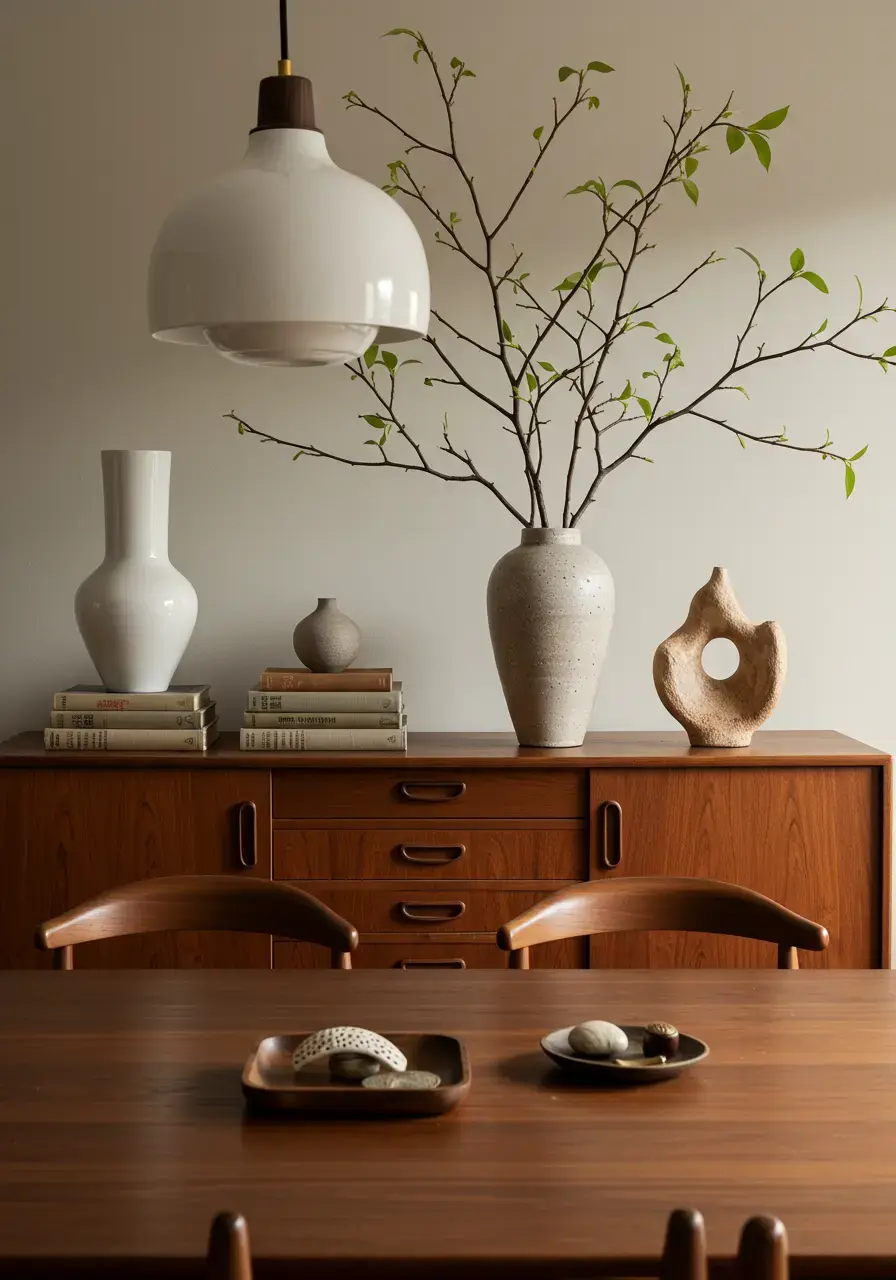
Why This Works:
Artful arrangements create visual interest and focal points within the dining room. They allow for personal expression, adding sophistication and a curated feel that highlights specific accessories and colors, completing the mid-century aesthetic.
How You Can Recreate It:
- Group objects of varying heights and textures on your credenza, such as a sculptural vase, a stack of vintage books, and a unique ceramic piece.
- Arrange a centerpiece on your dining table that includes fresh flowers or architectural branches in a mid-century vase.
- Use trays or decorative bowls to corral smaller items, creating a contained and organized display.
Functional Layouts for a Mid-Century Dining Room
A functional layout is incredibly important, especially in the dining room where things can get a bit chaotic if not planned well. For me, it’s about ensuring there’s enough space to move around comfortably, for chairs to pull out easily, and for conversation to flow naturally. I learned early on that even the most beautiful furniture doesn’t work if the room doesn’t function for daily life and entertaining.

Why This Works:
A functional layout ensures comfort and ease of movement within the dining room, making it practical for both everyday use and entertaining. It optimizes the space for seamless dining experiences, preventing bottlenecks and enhancing the flow.
How You Can Recreate It:
- Allow at least 36 inches of clearance around the dining table for comfortable chair pull-out and movement.
- Position a sideboard or credenza within easy reach of the table for convenient serving and storage.
- Consider the path from the kitchen to the dining area, ensuring it is clear and unobstructed for carrying food and dishes.
Harmonize Colors in Your Mid-Century Dining Space
Color harmony is the secret sauce for a truly cohesive mid-century dining room. It’s about more than just picking a few favorite shades; it’s about how they interact and flow together throughout the entire space. I love sticking to a palette of warm woods, rich jewel tones, and crisp neutrals, allowing each color to pop without clashing. When done right, it creates a sense of calm and sophisticated energy.
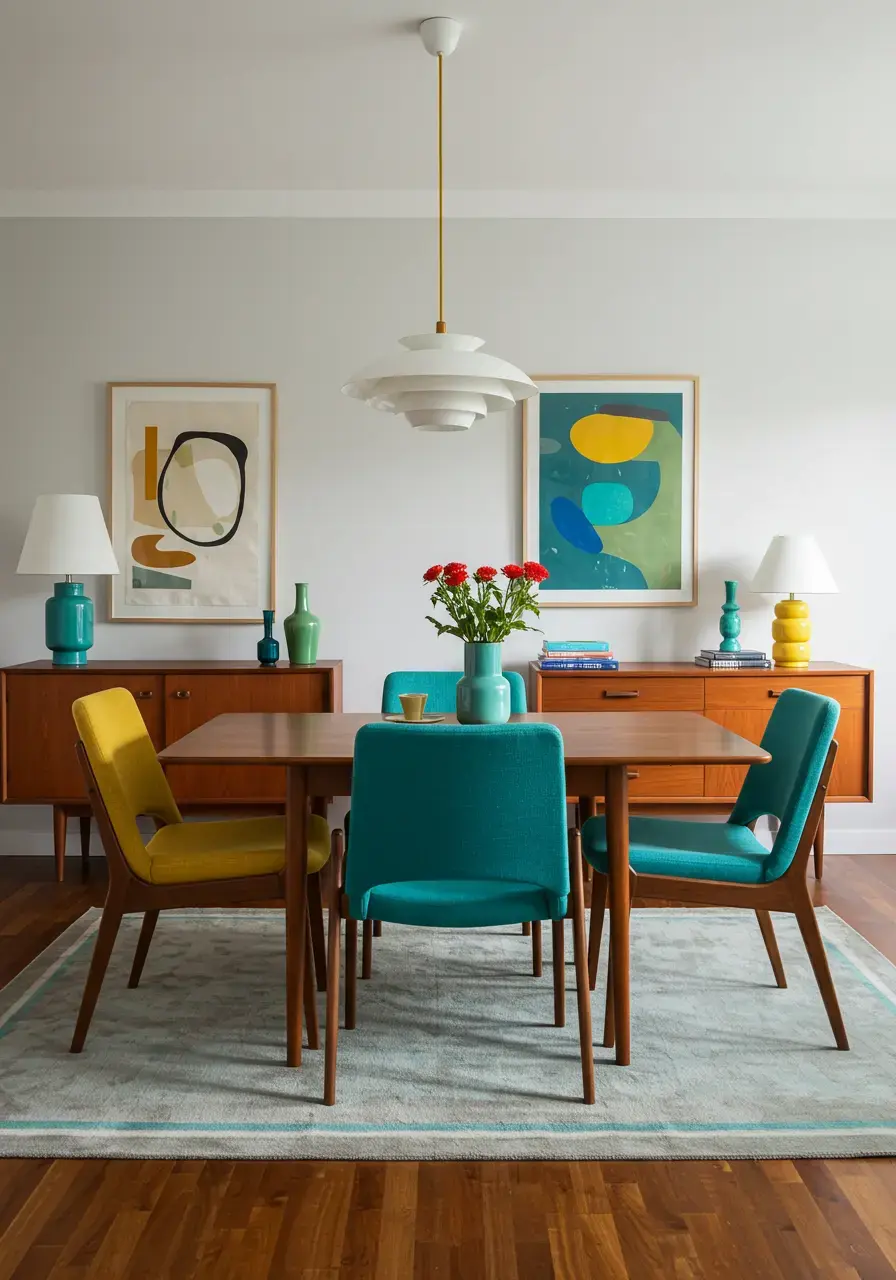
Why This Works:
Harmonizing colors creates a cohesive and visually pleasing mid-century dining room. It ensures that all elements work together, promoting a balanced and inviting atmosphere that feels intentional and stylish, deeply rooted in the era’s aesthetic.
How You Can Recreate It:
- Start with a base of warm wood tones (like teak or walnut) and neutral walls (off-white, light gray) as your foundation.
- Introduce 1-3 accent colors from the mid-century palette, such as mustard, avocado, turquoise, or burnt orange.
- Distribute these accent colors strategically throughout the room in various elements like chair upholstery, artwork, textiles, or decorative accessories to create balance.
Conclusion
There you have it—a guide to creating your very own mid-century dining room! I genuinely hope these ideas inspire you to curate a space that not only looks fantastic but also feels incredibly inviting and personal. Remember, design is all about making your home a reflection of you, a place where memories are made and laughter echoes. With a little creativity and these timeless mid-century dining room ideas, you’re well on your way to crafting a space that you and your loved ones will adore for years to come. Now, go forth and create!

